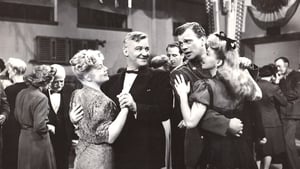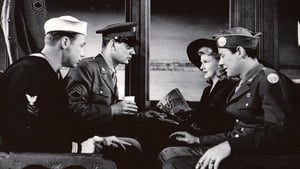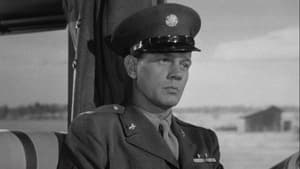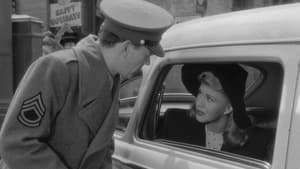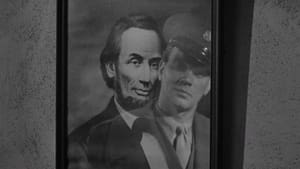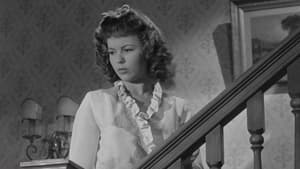Video Sources 0 Views
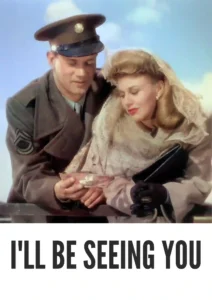
Synopsis

Step back in time to 1944 with I’ll Be Seeing You, a poignant and heartwarming wartime romance, now beautifully colorized to enhance its emotional depth. Starring Ginger Rogers and Joseph Cotten, this film explores themes of love, redemption, and hope amidst the backdrop of World War II. If you enjoy sentimental dramas with compelling characters, download this restored HD version and immerse yourself in a classic story of connection and second chances. Another title used for this movie was Double Furlough.
I’ll Be Seeing You tells the story of Mary Marshall (Ginger Rogers), a woman serving time in a state prison during World War II. Granted a Christmas furlough, she seeks to rebuild her life and escape the shadow of her past. On a train, she meets Sergeant Zachary Morgan (Joseph Cotten), a soldier suffering from shell shock. Mistakenly believing Mary is someone he knows, Zach strikes up a conversation. Mary, eager for connection and a fresh start, doesn’t correct his mistake.As they spend Christmas together with Zach’s family, a deep bond forms between them. Mary finds herself falling in love with Zach, and he with her, but their relationship is built on a foundation of deception. The film explores whether their love can survive the truth of Mary’s past and Zach’s inner demons. The movie delves into themes of forgiveness, acceptance, and the healing power of love in times of adversity. With its touching performances and emotionally resonant storyline, I’ll Be Seeing You offers a powerful reminder of the human capacity for hope and connection, even in the darkest of times.
The film features stellar performances from its leading actors:
- Ginger Rogers as Mary Marshall
- Joseph Cotten as Sergeant Zachary Morgan
- Shirley Temple as Barbara Marshall
- Spring Byington as Mrs. Marshall
- Tom Tully as Mr. Marshall
I’ll Be Seeing You falls into the genre of wartime romance, also showing elements of sentimental drama and family. Its focus on character relationships, emotional depth, and hopeful themes make it a standout film.
Released in 1944, I’ll Be Seeing You reflects the anxieties and hopes of a nation at war. During this period, sentimental dramas were popular, providing audiences with emotional catharsis and a sense of connection during uncertain times. The film’s portrayal of a soldier struggling with shell shock also touches upon the psychological toll of war, a theme that was increasingly explored in post-war cinema. I’ll Be Seeing You captures the spirit of resilience and optimism that defined the era, offering a glimpse into the lives and emotions of those affected by World War II.
This colorized version of I’ll Be Seeing You has been carefully restored using modern digital technology, enhancing the visual experience while respecting the film’s original tone and atmosphere. The colorization process involved a meticulous analysis of the original black and white footage, with careful consideration given to historical accuracy and artistic nuance. Advanced algorithms were used to select appropriate color palettes, enhance image details, and create a visually appealing and engaging viewing experience. The goal of the colorization was to breathe new life into the film, making it more accessible to contemporary audiences while preserving its classic charm and emotional impact.
- : William Dieterle
- : Marion Parsonnet
- : Charles Martin
- : Stanley Cortez
- : Hal C. Kern
- : Daniele Amfitheatrof
- : Vanguard Films
- : United Artists
- : 85 minutes
- : MP4
- : HD (1080p)
- : Compatible with most devices, including smartphones, tablets, computers, and smart TVs.
I’ll Be Seeing You was a commercial success upon its release, and it continues to be appreciated for its heartfelt performances and moving storyline. Critics praised Ginger Rogers and Joseph Cotten for their on-screen chemistry and their ability to convey the complex emotions of their characters.
- : What is I’ll Be Seeing You about?
- A: I’ll Be Seeing You is a wartime romance about a woman on furlough from prison who finds love with a soldier suffering from shell shock.
- : Is I’ll Be Seeing You (1944) a well-known film?
- A: While not as widely recognized as some classic films, I’ll Be Seeing You is a beloved example of sentimental wartime cinema.
- : Is this version of I’ll Be Seeing You colorized?
- A: Yes, this version has been professionally colorized to enhance the viewing experience.
- : What makes I’ll Be Seeing You special?
- A: I’ll Be Seeing You offers a poignant exploration of love, forgiveness, and hope amidst the backdrop of World War II.
- : What is the download format?
- A: The download format is MP4, which is compatible with most devices.
- : What resolution is the download?
- A: The resolution is HD (1080p), providing a high-quality viewing experience.
Watch I’ll Be Seeing You Today!
